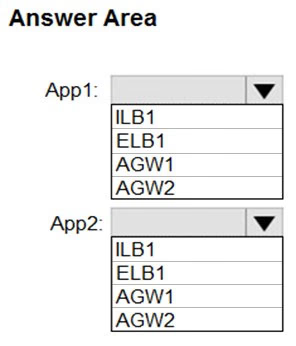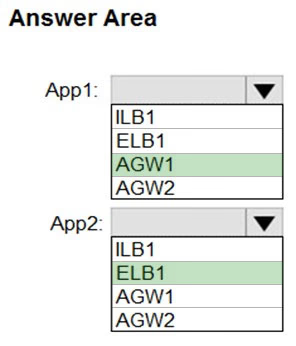HOTSPOT -
You have an Azure subscription that contains the resources shown in the following table.

You need to deploy a load-balancing solution for two Azure web apps named App1 and App2 to meet the following requirements:
✑ App1 must support command injection protection.
✑ App2 must be able to use a static public IP address.
✑ App1 must have a Service Level Agreement (SLA) of 99.99 percent.
Which resource should you use as the load-balancing solution for each app? To answer, select the appropriate options in the answer area.
NOTE: Each correct selection is worth one point.
Hot Area:

